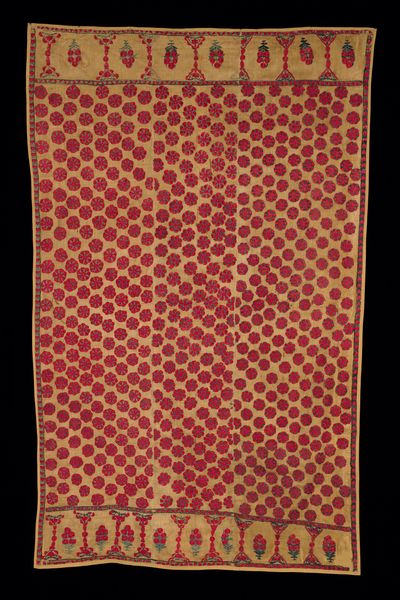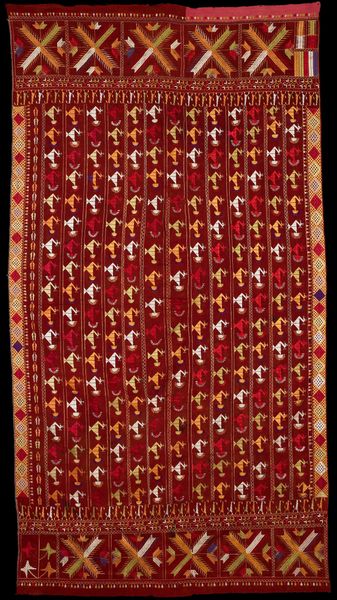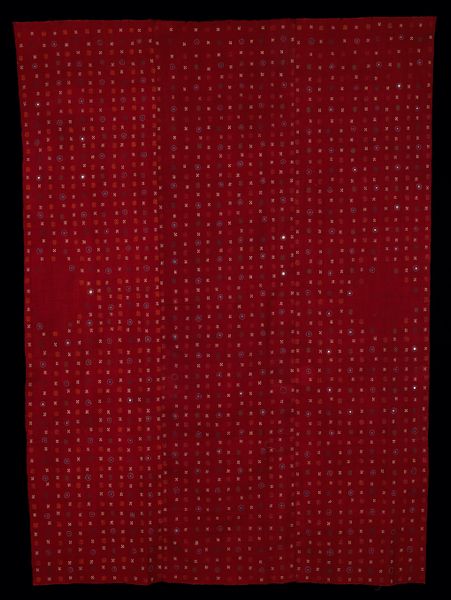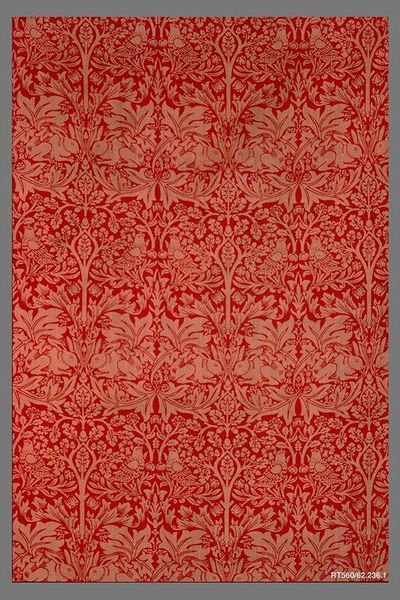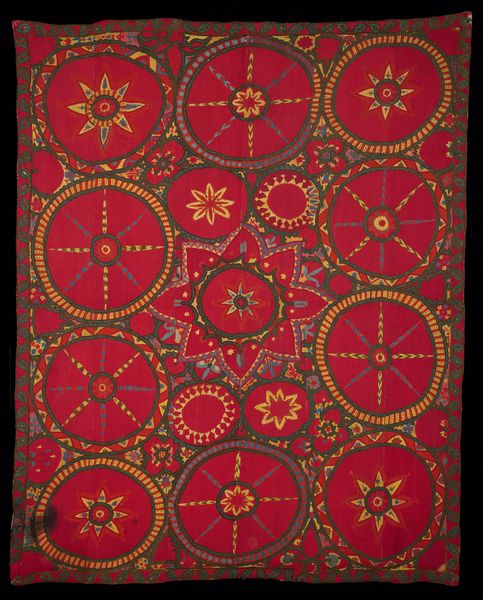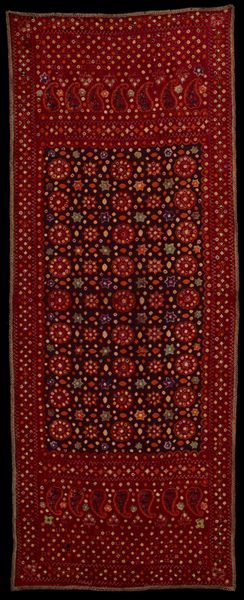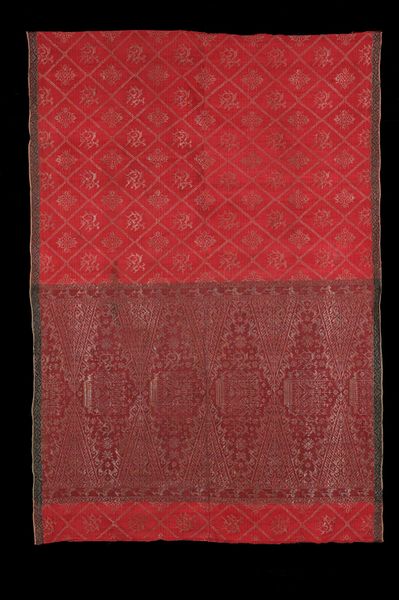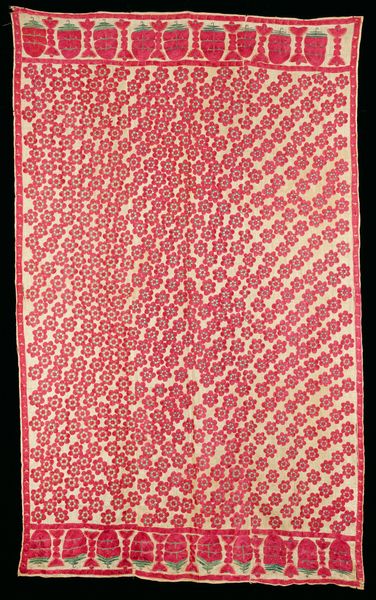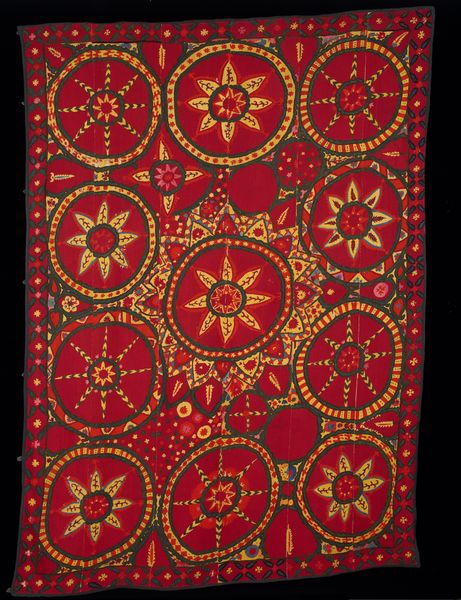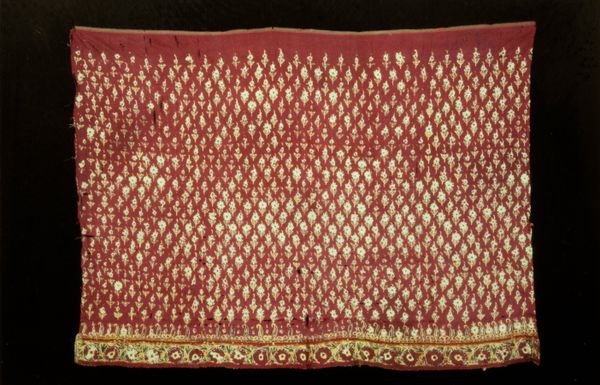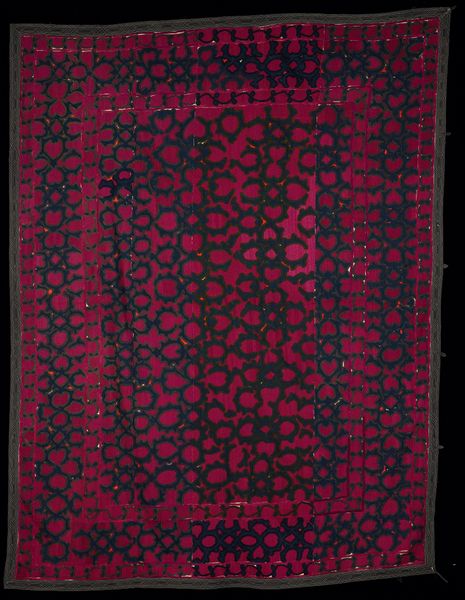
Woman's wedding veil (odhani) c. 19th century
0:00
0:00
silk, textile, cotton
#
natural stone pattern
#
silk
#
textile
#
geometric pattern
#
abstract pattern
#
minimal pattern
#
folk-art
#
organic pattern
#
geometric
#
repetition of pattern
#
intricate pattern
#
pattern repetition
#
cotton
#
layered pattern
#
combined pattern
Dimensions: 95 x 42 in. (241.3 x 106.7 cm)
Copyright: Public Domain
This is a woman's wedding veil, or Odhani, created by the Bhansali or Lohana communities. The visual impact of the fabric is created by the expanse of madder-red cotton, punctuated by tiny resist-dyed spots in white, gold and black. Two corners are decorated with symmetrical mandala-like ornamentation. The overall structure of the textile is compelling. The resist-dyed spots create a field of visual data. The symmetrical organization of the corner patterns, made up of layered semi-circular shapes and radiating floral motifs, suggest not only the cosmic but also notions of balance, order, and harmony. This symmetry may reflect the formal and symbolic importance of marriage. The dots, also called 'bandhana', use a traditional tie-dyeing technique where small sections of the fabric are bound tightly before dyeing, resulting in intricate patterns. These dots have a semiotic function, acting as signs of community identity, social status, and regional aesthetics. The veil is more than adornment, it is a cultural artifact that communicates complex social meanings.
Comments
No comments
Be the first to comment and join the conversation on the ultimate creative platform.
